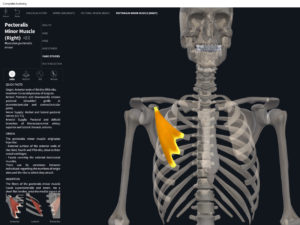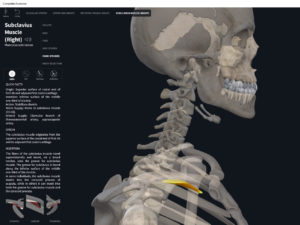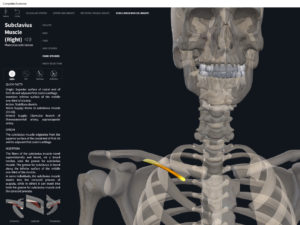Anatomy & Physiology: Muscles—Pectoralis Minor.
Structure.
- Origin: ribs 2-5, ribs 3-5, or ribs 2-4.
- Insertion: coracoid process of scapula.
Function.
- Concentric action: protracts scapula/abduction, depresses scapula, and downward rotation; lateral tilting the scapula at he scapulocostal joint (ScC), upward tilt of scapula at ScC.
- Reverse mover action: elevates ribs 3-5 during forced inhalation when scapula is stabilized.
- Eccentric action: controls/restrains/slows scapular retraction, elevation, upward rotation, medial tilt, and downward tilt; controls/restrains/slows depression of ribs 3-5.
- Isometric action: stabilization of the shoulder girdle, stabilization of scapula, stabilizes ribs 3-5.
- Innervation: medial pectoral nerve.
- Arterial supply: pectoral branches of the thoracoacromial trunk (branch of axillary artery); posterior intercostal arteries (branch of aorta); lateral thoracic artery (branch of axillary artery).
Clinical Significance.
References
Biel, A. (2015). Trail guide to the body: A hands-on guide to locating muscles, bones and more.
Cedars-Sinai. (2018). Vertebrae of the spine. Retrieved from https://www.cedars-sinai.org/health-library/diseases-and-conditions/v/vertebrae-of-the-spine.html
Clark, M., Lucett, S., Sutton, B. G., & National Academy of Sports Medicine. (2014). NASM essentials of corrective exercise training. Burlington, MA: Jones & Bartlett Learning.
Jenkins, G., & Tortora, G. J. (2012). Anatomy and Physiology: From Science to Life, 3rd Edition International Stu. John Wiley & Sons.
Muscolino, J. E. (2017). The muscular system manual: The skeletal muscles of the human body.




